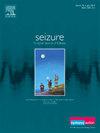无声的威胁:意识和态度的沟通在印度神经科医生猝死症:横断面研究
IF 2.8
3区 医学
Q2 CLINICAL NEUROLOGY
引用次数: 0
摘要
背景:国际指南明确认可与癫痫患者讨论癫痫猝死(SUDEP)的重要性和必要性。印度是一个占全球癫痫总负担六分之一的国家。尽管如此,人们对印度神经科医生对SUDEP的认识和态度知之甚少。目的探讨印度神经科医师对SUDEP与PWE沟通的认识和态度。方法在印度神经病学协会中进行了一项使用验证主题的李克特回答问题的横断面在线调查。采用了非判别指数滚雪球法,方便了非概率抽样。调查涉及与sudp有关的主题,包括咨询的认识、知识、需要和重要性。与其他癫痫风险咨询进行比较。采用描述性统计进行分析。结果在275名同意的参与者中,大多数是男性(76%),执业超过5年(63%),私人医生(61%)和在城市工作(99%)。几乎所有参与者(98%)都知道SUDEP。五分之一(20%)的人对大部分或所有SUDEP的PWE进行咨询,而90%的人讨论日常活动的风险,89%的人讨论驾驶风险,38%的人讨论精神问题。在正式癫痫培训的基础上进行癫痫猝死症咨询的可能性有显著差异(p <;0.001)熟悉SUDEP指南(p <;0.001),以及猝死危险因素知识(p <;0.001)。90%的人要求对突发猝死事件风险和沟通进行进一步培训。结论虽然大多数印度神经科医生对SUDEP有一定的认识,但在SUDEP对PWE的风险沟通方面存在很大差距。虚拟培训和教育可以帮助弥合知识鸿沟。本文章由计算机程序翻译,如有差异,请以英文原文为准。
Silent threats: awareness and attitudes to communication of SUDEP among neurologists in India: a cross-sectional study
Background
International guidelines unequivocally endorse the importance and need to discuss Sudden Unexpected Death in Epilepsy (SUDEP) with people with epilepsy (PWE). India is a country accounting for a sixth of all global epilepsy burden. Despite this little is known of Indian neurologists’ knowledge and attitudes to SUDEP.
Objective
To explore India Neurologists awareness and attitudes to SUDEP communication to PWE.
Methods
A cross-sectional online survey of Likert response questions using validated themes, was circulated among the neurology fraternity, India. Non-discriminatory exponential snowballing technique leading to convenience non-probability sampling was used. The inquiry involved SUDEP-related topics including the awareness, knowledge, need for and importance of counselling. A comparison with other epilepsy risk counselling was made. Descriptive statistics were used for analysis.
Results
Of 275 consenting participants, a majority were male (76 %), had over 5 years of practice (63 %), were private practitioners (61 %) and working in urban areas (99 %). Almost all participants (98 %) knew of SUDEP. A fifth (20 %) counselled most or all PWE of SUDEP compared to 90 % discussing risks from daily activities, 89 % driving risk and 38 % psychiatric concerns. There were significant differences to the likelihood of SUDEP counselling being undertaken based on formal epilepsy training (p < 0.001) familiarity with SUDEP guidelines (p < 0.001), and SUDEP risk factors knowledge (p < 0.001). Further training for SUDEP risk and communication was requested by 90 %.
Conclusion
While most Indian neurologists have SUDEP awareness there is a significant gap in communication of SUDEP risks to PWE. Virtual training and education could help bridge the knowledge gap.
求助全文
通过发布文献求助,成功后即可免费获取论文全文。
去求助
来源期刊

Seizure-European Journal of Epilepsy
医学-临床神经学
CiteScore
5.60
自引率
6.70%
发文量
231
审稿时长
34 days
期刊介绍:
Seizure - European Journal of Epilepsy is an international journal owned by Epilepsy Action (the largest member led epilepsy organisation in the UK). It provides a forum for papers on all topics related to epilepsy and seizure disorders.
 求助内容:
求助内容: 应助结果提醒方式:
应助结果提醒方式:


